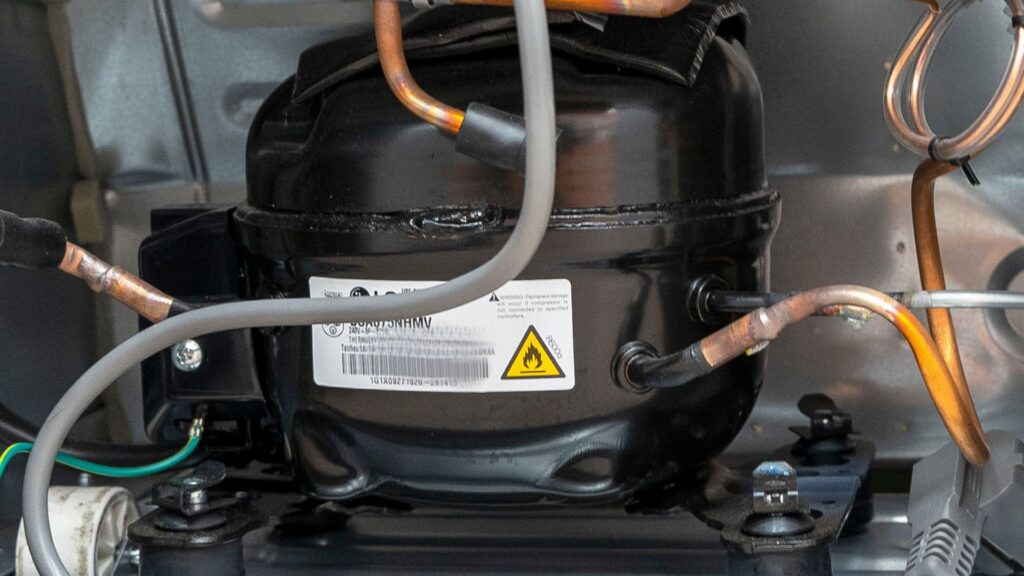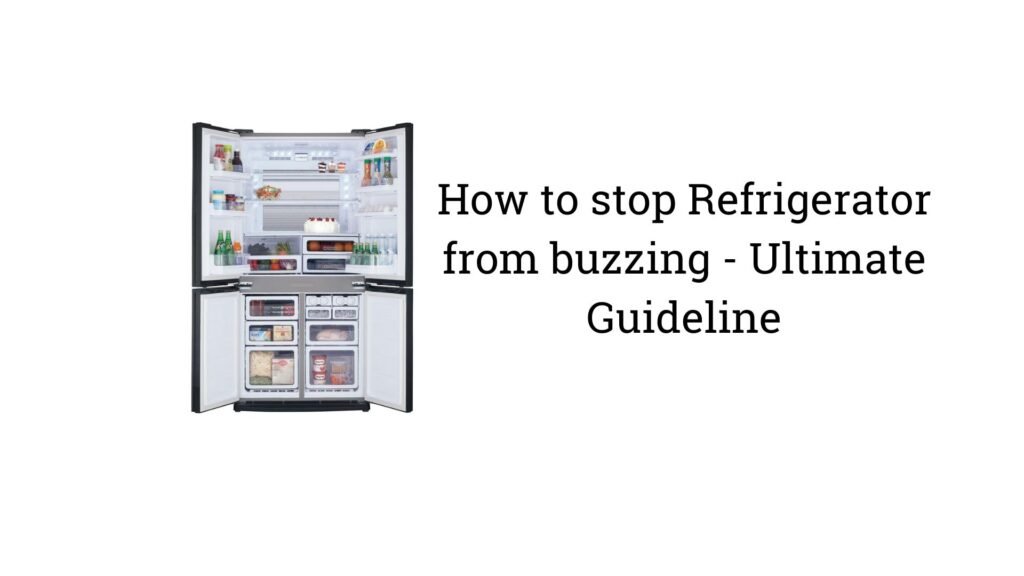Do you have a hard time keeping your refrigerator running properly? Refrigerators are an integral part of our lives, but when something goes wrong, it can be stressful. As most homeowners know, one of the biggest issues is a refrigerant leak—and recovering your lost coolant isn’t always easy. To give you peace of mind and help keep your family safe, here’s everything you need to know about how to recover refrigerant in your fridge safely and effectively.
Understand why it’s important to recover refrigerant before you start any repairs:
When coolant leaks out of your refrigerator, it can not only damage the appliance itself but also cause potential health risks for your family. This is because many refrigerants contain CFCs and HCFCs, which are known to be hazardous to human health. To keep yourself and your loved ones safe, it’s important to take extra precautions when handling a leaking fridge.
Find the source of the leak:
The first step is to find out where the coolant is leaking from. To do this, you’ll need an electronic refrigerant detector. These detectors use sensors to detect traces of leaked refrigerants in the air and alert you when they find any. Once you know which part of your refrigerator has a leak, you can move on to the next step.
Recover the refrigerant safely and properly:
Once you know where the leak is coming from, it’s time to start recovering the refrigerant. This process involves using specialized equipment to extract any coolant remaining in your refrigerator and store it securely for disposal. It’s important to make sure that no refrigerant is released into the atmosphere, as this can lead to further environmental damage.
Learn how to identify the type of refrigerant in your home or business before beginning recovery:
To ensure you recover the coolant properly, it’s important to identify what type of refrigerant is leaking from your refrigerator. Different types of coolants have different methods for recovery—so if you don’t know which kind is in your fridge, it won’t be possible to do the job correctly. To find out what type of refrigerant is leaking, you’ll need to locate the unit’s model number and serial number. Once you have these two pieces of information, you can look up which type of refrigerant you need to recover.
Be aware that some types of coolants require special handling:
Not all coolants are created equal—some are more hazardous than others. Chlorofluorocarbons, or CFCs, are particularly hazardous and should be treated with extra care. If you’re dealing with a refrigerator leak that contains CFCs, it’s important to wear the appropriate protective gear and follow all safety protocols when beginning recovery procedures.
Make sure to dispose of recovered refrigerants according to local laws and regulations:
Once you’ve recovered the refrigerant, it will need to be properly disposed of. To do this, contact your local hazardous waste disposal facility and ask about their regulations for refrigerant disposal. Different laws may apply depending on where you live—so make sure to follow all guidelines for the safe and legal disposal of any recovered coolants.
Choose the right equipment for safely recovering refrigerant from a system:
It’s important to use the right tools when recovering refrigerant from a system. This includes items such as vacuum pumps, charging hoses, and recovery tanks that are specifically designed for handling coolants. Always make sure to check the manufacturer’s instructions before using any of these pieces of equipment. Additionally, be aware that some types of refrigerants require special handling—so make sure you know what type of coolant is in the system before starting any recovery procedures.
1.Acquire the right equipment for your project, such as a recovery cylinder and hose:
When recovering the refrigerant, it’s important to have the right tools for the job. You’ll need a recovery cylinder and hose in order to remove any coolant remaining in your refrigerator safely. The recovery hose should be connected to both the low side of the system—where you wish to extract from—and the recovery cylinder, where you will store the recovered refrigerant. Make sure to read and follow all instructions carefully before beginning any recovery procedure.
the
2. Connect the hose to both the low-side and high side of the unit:
Once you have the right equipment, it’s time to start connecting the hose. To begin, attach one end of the hose to the low side of your refrigerator—where you wish to extract from—and make sure it is securely connected. Then, attach the other end of the hose to the high side of your unit. where you will connect to the recovery cylinder and make sure it is also secure. Finally, once both ends are properly connected, turn on the recovery machine. This will draw out any remaining refrigerant from your refrigerator and store it in the recovery cylinder for disposal.
3. Turn off your power source and open the valve on the recovery cylinder
Before you begin recovering the refrigerant, make sure your power source is turned off. This will prevent any damage to the unit while it’s being worked on. Then, open the valve on the recovery cylinder—where the recovered coolant will be stored until it’s disposed of. Be sure to keep an eye on the pressure gauge to ensure that the refrigerant is being properly extracted.
4. Start at the low-side valve and turn it clockwise until you hear a click:
Once the recovery equipment is connected and your power source is turned off, you can start recovering the refrigerant. Begin by turning the low-side valve clockwise until you hear a click. This will open the valve and allow any remaining coolant to flow into the recovery cylinder. Make sure to keep an eye on the pressure gauge throughout this process to ensure that all of the coolant is safely removed. If you notice any drops in pressure, turn off the machine and check for any leaks before continuing.
5. Move to the high-side valve and repeat step-4, then close both valves:
Once the low-side valve has been opened, move to the high-side valve and repeat step 10. Turn this valve clockwise until you hear a click—then both valves should be open, and the remaining refrigerant will start flowing into the recovery cylinder. When all of the coolant has been removed, it’s important to close both valves. This will stop any further coolant from entering the system and ensure that you have safely removed all of the existing refrigerants.
Perform a final check for leaks before removing your recovery equipment:
Before removing the recovery equipment, it’s important to perform one last check for any remaining leaks. Make sure there is no pressure in the system, and check all of your hoses and valves for any signs of wear or damage. If you find any leaks, make sure to repair them before continuing with the recovery process. Once you’re sure there are no further issues, carefully remove the recovery equipment from your system.
Conclusion:
Recovering refrigerant from a system is not a job to be taken lightly. It requires special care and attention in order to ensure the safety of both you and your unit. By following these steps, you can successfully recover any remaining coolant from your refrigerator without endangering yourself or your equipment. With the right tools, knowledge, and preparation, recovering refrigerant can be a safe and straightforward process
FAQ’s:
A. Refrigerant recovery is a process where the refrigerant from your appliance, such as your refrigerator, is collected and stored in a specialized container. This process is essential because refrigerants are toxic, and if they are released into the environment, they can cause severe harm. Therefore, it’s necessary to recover refrigerant from your refrigerator instead of just releasing it into the air.
A. As we mentioned earlier, refrigerants are harmful to the environment, and they can cause damage to the ozone layer, leading to global warming. In addition to this, improper refrigerant handling can have negative effects on the environment and lead to hefty fines.
A. While it is possible to recover refrigerant on your own, we recommend having a licensed technician handle it. Refrigerants can be dangerous, and the equipment required to recover them can be expensive. A professional technician will have the necessary experience and equipment to recover the refrigerant safely.
A. After the refrigerant has been recovered, it’s important to dispose of it correctly. You can take the refrigerant container to an HVAC or appliance repair shop to dispose of it safely. Alternatively, some municipalities offer refrigerant disposal services, so you can explore your local options.



